All trigonometric functions are basically the trigonometric proportions of any given angle. For example, if we take the functions $latex f(x)= \sin(x)$, $latex f(x)=\tan(x)$, etc, we are considering these trigonometric proportions as functions. The domain and range of these trigonometric functions will depend on the nature of their corresponding trigonometric proportions.
Here, we will learn about the domain and range of fundamental trigonometric functions such as sine, cosine, and tangent. Also, we will look at the domain and range of the cosecant, secant, and tangent functions.
Domain and range of trigonometric functions (sin, cos, tan)
Sine
We can start by considering the simplest trigonometric identity:
$latex {{\sin}^2}(x)+{{\cos}^2}(x)=1$
From this identity, we can derive the following interpretations:
$latex {{\cos}^2}(x)=1-{{\sin}^2}(x)$
$latex \cos(x)=\sqrt{1-{{\sin}^2}(x)}$
We know that the cosine function is defined for real values, so the value inside the square root cannot be negative. Therefore, we can form the inequality :
$latex 1-{{\sin}^2}(x)\geq 0$
$latex {{\sin}^2}(x)\leq 1$
$latex \sin(x)\in [-1, 1]$
Therefore, we have already obtained the domain and range for the sine function. The domain is all the real numbers of x since we do not have any restrictions on the values of x. The range is from -1 to 1, including these values. We can check this by looking at its graph:
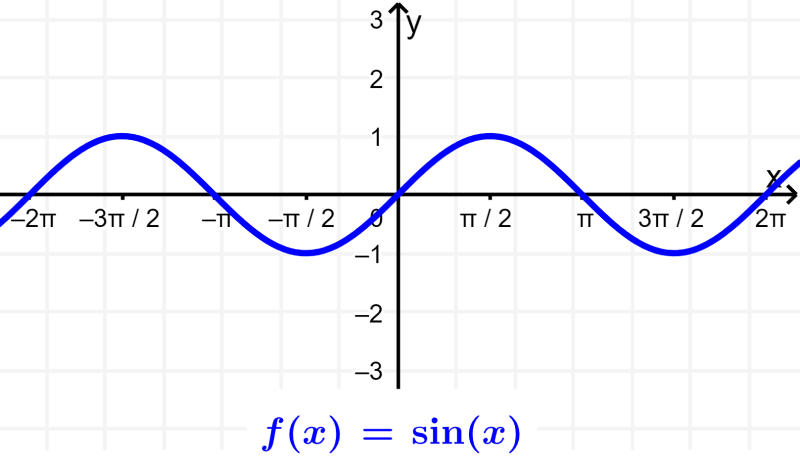
Cosine
Similarly, using the same methodology, we have:
$latex 1-{{\cos}^2}(x)\geq 0$
$latex {{\cos}^2}(x)\leq 1$
$latex \cos(x)\in [-1, 1]$
Therefore, the domain of the cosine function is also all the real numbers of x. The range of the cosine function is from -1 to 1, including these values. We can verify this by looking at its graph:
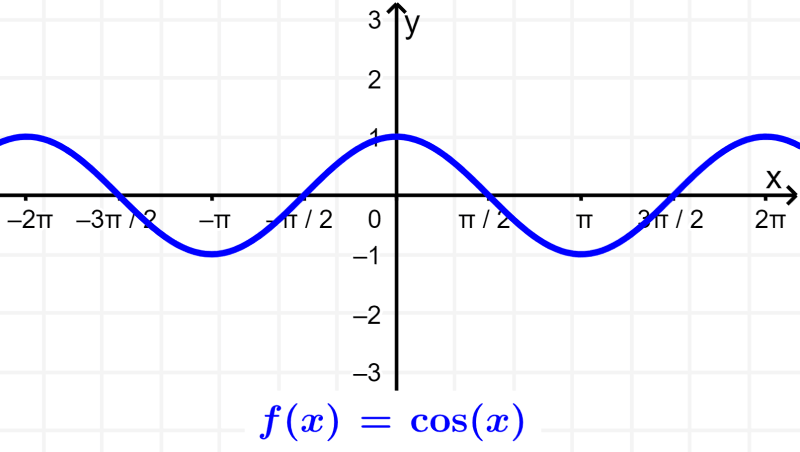
Something important to keep in mind is that the range of sine and cosine depends on the amplitude of the functions. For example, if we have $latex f(x)=5 \cos(x)$, the range is from -5 to 5.
Tangent
Now, let’s look at the function $latex f(x)= \tan(x)$. We know that $latex \tan(x)= \frac{\sin(x)}{\cos(x)}$. This means that the tangent function is defined for all values except those that make $latex \cos(x)$ equal to zero, since a fraction with denominator equal to zero is undefined.
Now, we know that $latex \cos (x)$ is zero for the angles $latex \frac{\pi}{2}, ~ \frac{3 \pi}{2}, ~ \frac{5 \pi}{ 2}$, etc.
Therefore, the domain of the tangent function is $latex R- \frac{(2n+1) \pi}{2}$ and the range is all real numbers. We can see this in the graph:
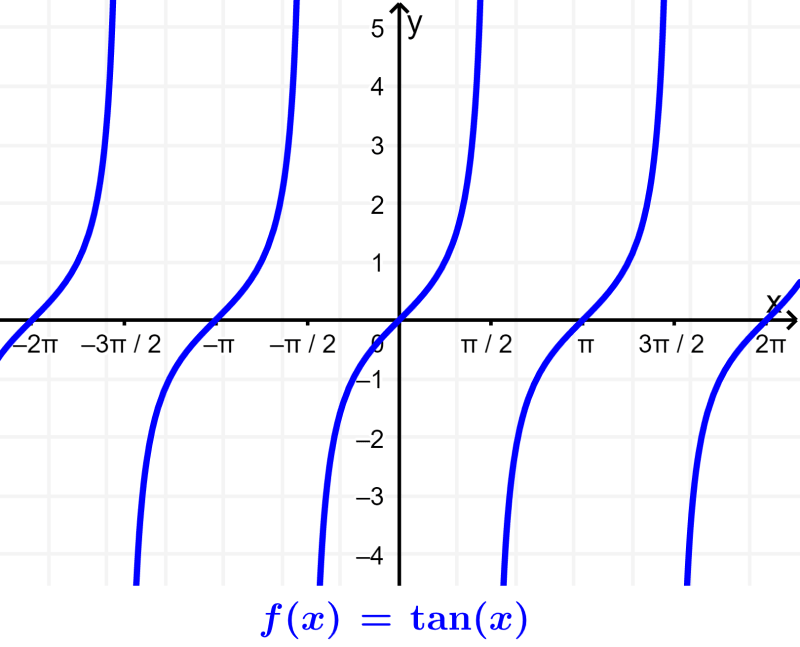
Domain and range of functions cosec, sec and cot
Secant
We know that the secant is the reciprocal function of the cosine. Therefore, we have:
$latex \sec(x)=\frac{1}{\cos(x)}$
That means that the secant will not be defined for the points where $latex \cos(x)=0$. Therefore, the domain of $latex f(x)=\sec(x)$ will be $latex R-\frac{(2n+1)\pi}{2}$.
The range of the secant will be $latex R-(-1, 1)$. Given that $latex \cos(x)$ is located between -1 to 1, the secant can never be in this region. We can look at the graph:
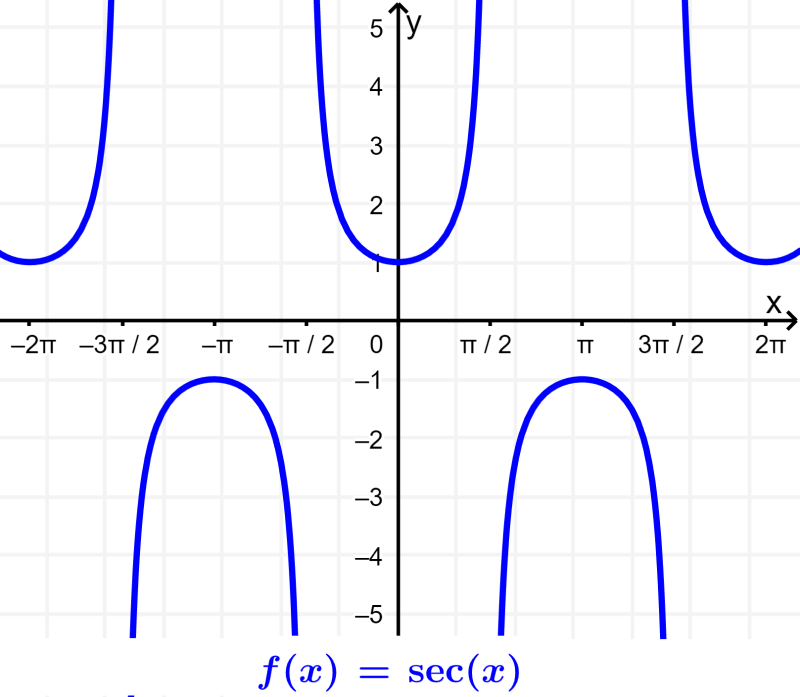
Cosecant
The cosecant is the reciprocal function of the sine. Therefore, we have:
$latex \csc(x)=\frac{1}{\sin(x)}$
We know that the cosecant will not be defined for the points where $latex \sin(x)=0$. Therefore, the domain of $latex f(x)=\csc(x)$ will be $latex R-n\pi$.
The range of the cosecant will be $latex R-(-1, 1)$. This is because $latex \sin(x)$ is between -1 to 1, so the cosecant can never be in this region. We can check it with its graph:
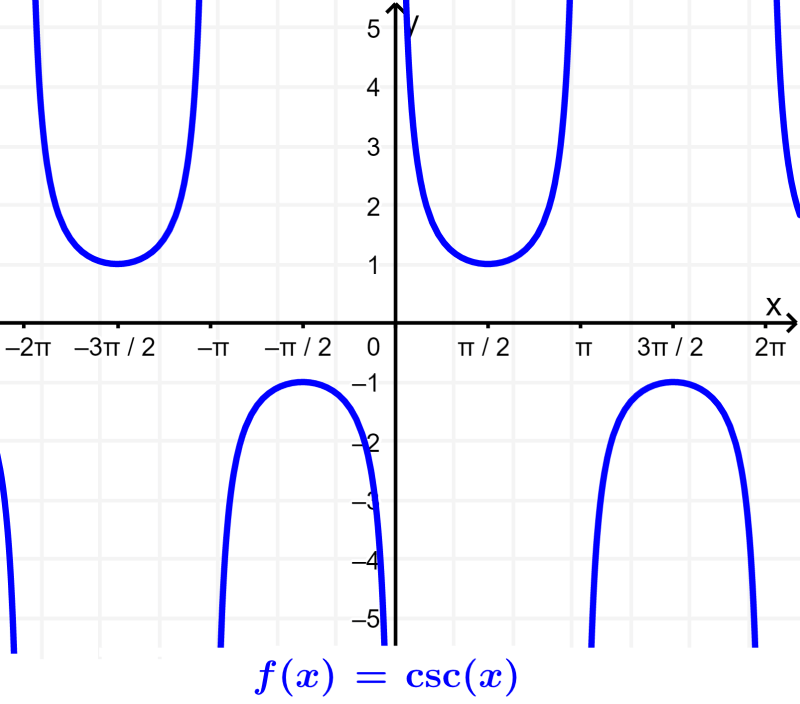
Cotangent
The cotangent is the reciprocal of the tangent. Therefore, we have:
$latex \cot(x)=\frac{1}{\tan(x)}$
The cotangent function will not be defined for the points where $latex \tan(x)=0$. Therefore, the domain of $latex f(x)=\cot(x)$ will be $latex R-n\pi$.
The range of the cotangent will be $latex R – (- 1, 1)$ the set of all real numbers because we have no restrictions. We can look at the graph:

See also
Interested in learning more about the domain and range of functions? Take a look at these pages:




